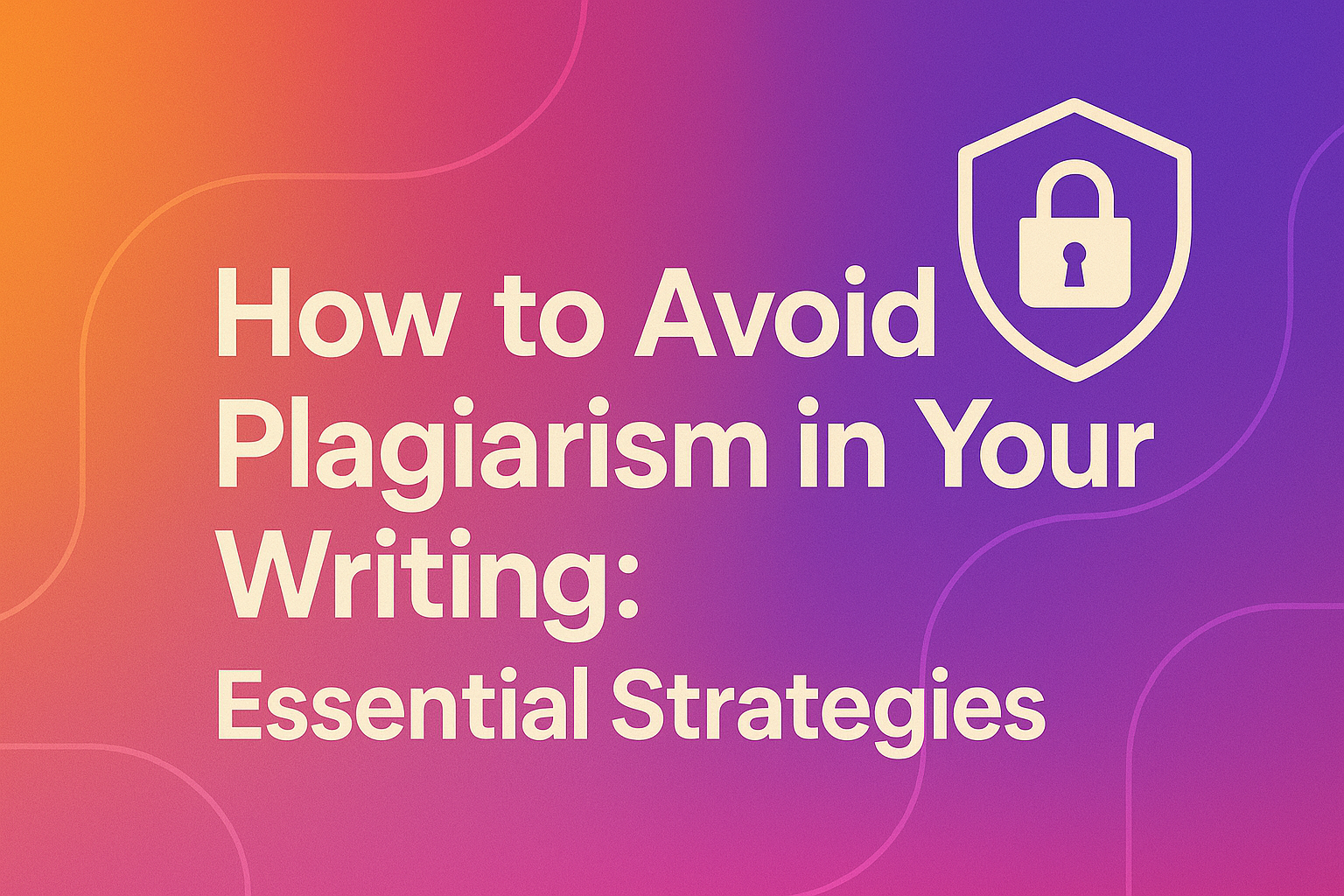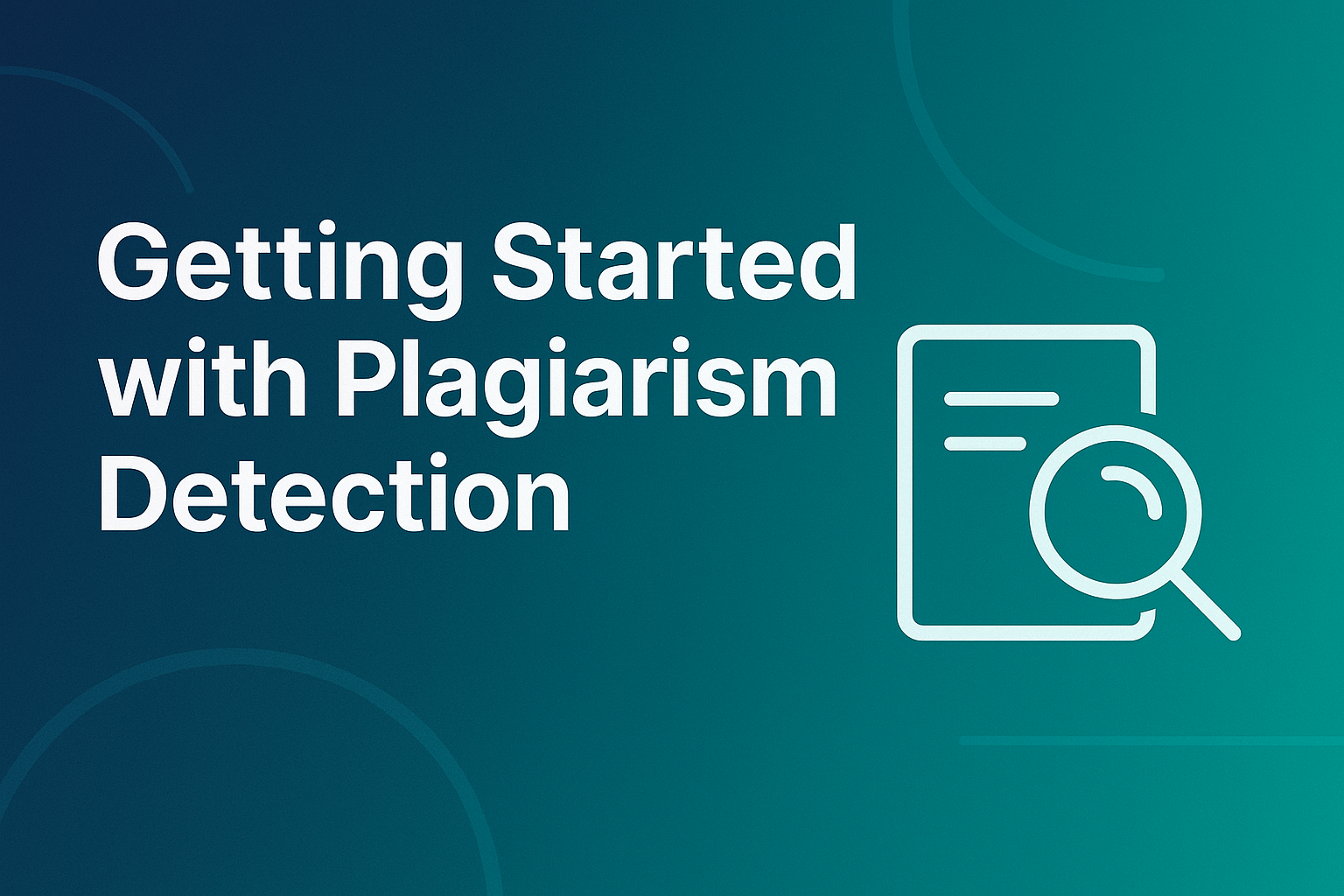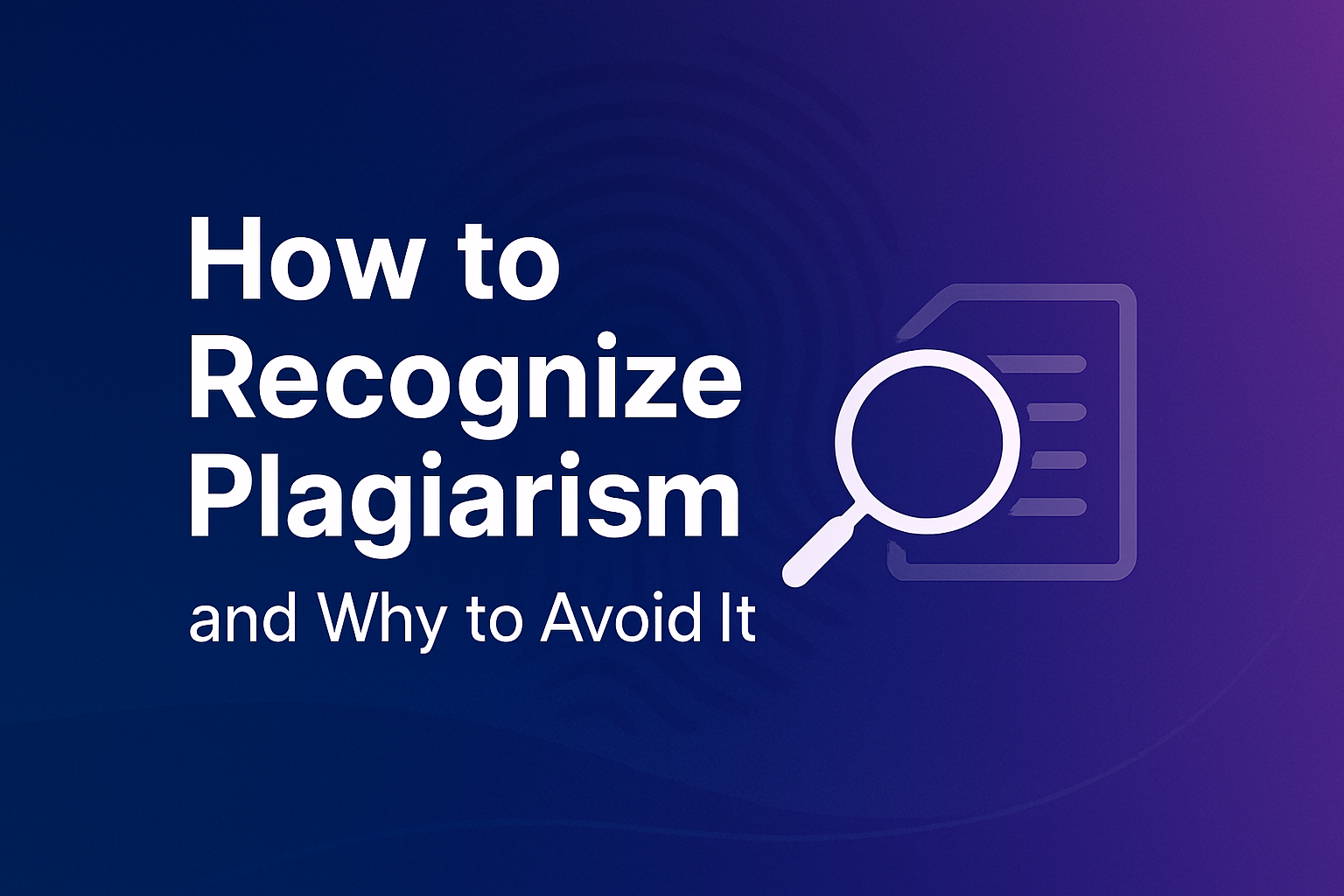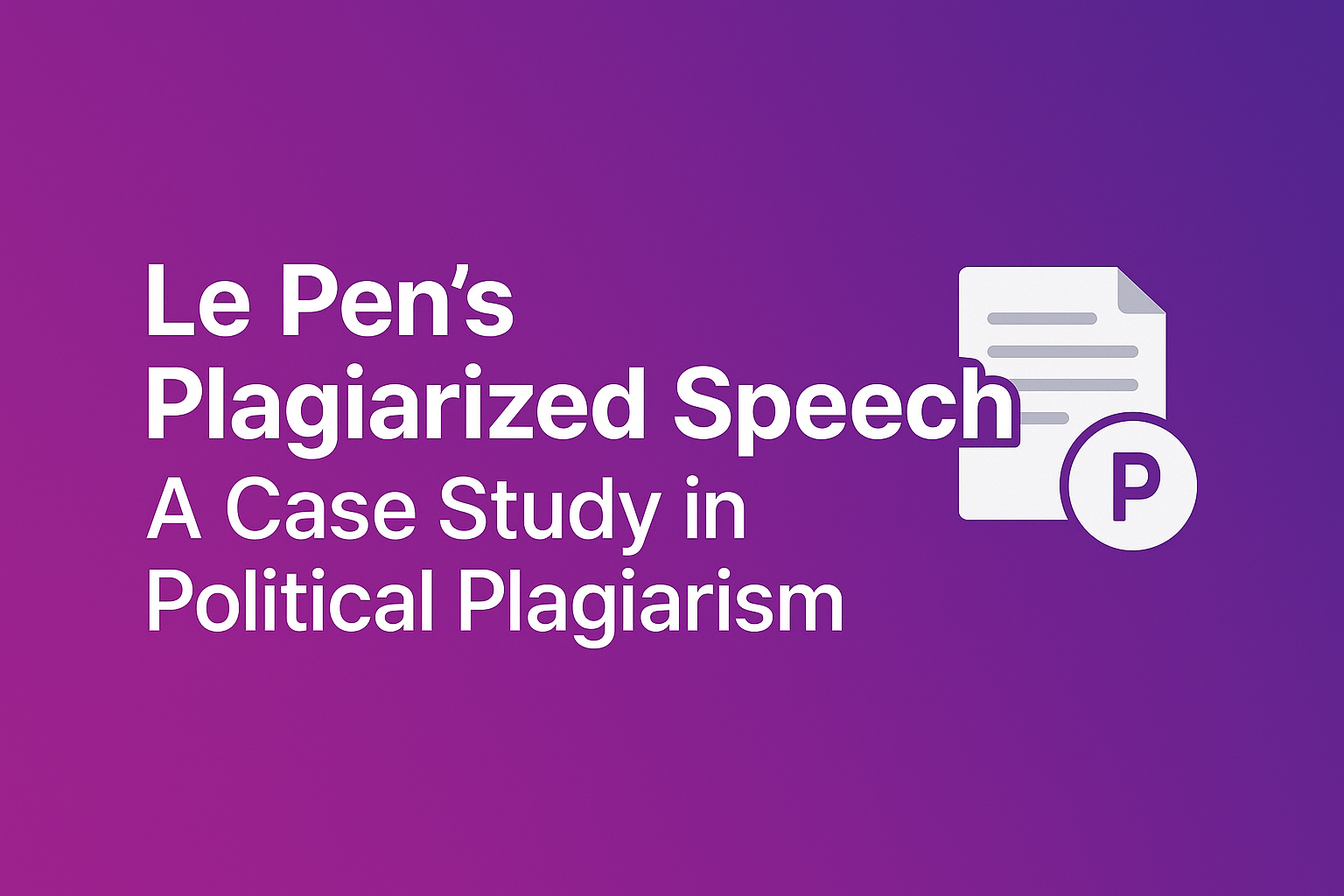
How to Avoid Plagiarism in Your Writing: Essential Strategies
Discover practical techniques to ensure originality in your writing and avoid the serious consequences of plagiarism in academic and professional contexts.
Read articleCheck your papers for plagiarism with our advanced AI tools


In today's digital age, ensuring content originality is more important than ever. Plagiarism detection tools have become essential for students, educators, writers, and content creators across all industries. This guide will help you understand how to effectively use these tools to maintain integrity in your work.
Plagiarism is the act of using someone else's work, ideas, or content without proper attribution. It can take many forms:
Understanding these distinctions is important for avoiding plagiarism in your own work.
Plagiarism can have serious consequences:
Modern plagiarism checkers like Plagly use sophisticated algorithms to compare submitted text against:
These tools assess similarity by analyzing:
// Example algorithm pattern (simplified)
function checkPlagiarism(text) {
const textFragments = breakIntoFragments(text);
for (const fragment of textFragments) {
const matches = searchDatabase(fragment);
if (matches.length > 0) {
reportSimilarity(fragment, matches);
}
}
}
To get the most from plagiarism detection tools:
When you receive a similarity score, remember:
| Similarity Score | Interpretation | Recommendation |
|---|---|---|
| 0-10% | Very low similarity | Generally acceptable |
| 11-25% | Moderate similarity | Review highlighted sections |
| 26-50% | High similarity | Significant revision needed |
| 51%+ | Very high similarity | Major rewrite required |
A higher percentage doesn't automatically mean plagiarism, especially in certain fields where specific terminology is common. Context matters!
Here are some strategies to ensure your work remains original:
"The best way to avoid plagiarism is to develop good research habits from the beginning." — Academic Integrity Office
Plagiarism detection tools are valuable allies in maintaining academic and professional integrity. By understanding how these tools work and implementing good practices, you can ensure your content remains original and properly attributed.
Start using Plagly today to check your content and protect your reputation!
This guide is part of our content integrity series. Check back for more articles on academic writing, content creation, and plagiarism prevention.

Discover practical techniques to ensure originality in your writing and avoid the serious consequences of plagiarism in academic and professional contexts.
Read article
Learn how to identify different forms of plagiarism and understand the serious consequences of this academic offense.
Read article
Examining the 2017 incident when French presidential candidate Marine Le Pen plagiarized a speech from her rival François Fillon and its implications.
Read article